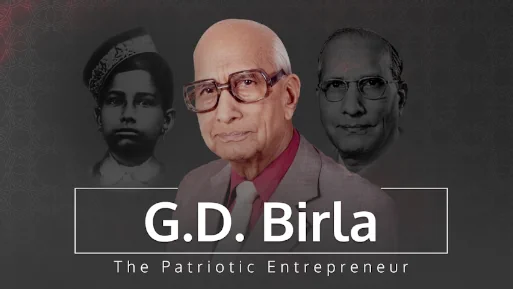Grasim’s Q3 FY21 Profit After Tax jumps 2X on a Y-o-Y Basis
12 February, 2021
Share- Key Businesses outperform pre-COVID operational levels, leveraging the synergy of a conglomerate and the energy of focused businesses.
- Consolidated EBITDA and PAT are up 52 per cent and 103 per cent YoY respectively; Standalone EBITDA and PAT are up 53 per cent and 95 per cent YoY respectively.
- Board earlier announced foray into the paints sector with initial capex of ₹5,000 Cr. over the next three years.
- Fertiliser Business sale is on track with CCI approval and Stock Exchange NOC received.
Financial results
| Standalone | Consolidated | |||||
|---|---|---|---|---|---|---|
| Q3 FY21 | Q3 FY20 | % Change (Y-o-Y) |
Q3 FY21 | Q3 FY20 | % Change (Y-o-Y) |
|
| 3,672 | 3,858 | -5% | Revenue | 20,986 | 18,617 | 13% |
| 709 | 465 | 53% | EBITDA | 4,476 | 2,945 | 52% |
| 359 | 185 | 95% | PAT | 1,384 | 680 | 103% |
Excluding Revenue and EBITDA of the discontinued operations of Fertilisers Business (Indo Gulf Fertilisers-IGF) consequent to board approval for divestment of the same.
Consolidated Revenue for Q3FY21 stood at ₹20,986 Cr. up 13 per cent Y-o-Y basis and 17 per cent Q-o-Q. Consolidated EBITDA was ₹4,476 Cr. jumped 52 per cent Y-o-Y and 24 per cent Q-o-Q. The Consolidated PAT for Q3FY21 soared 103 per cent Y-o-Y and 43 per cent Q-o-Q at ₹1384 Cr.
Standalone performance witnessed a remarkable improvement. Revenue stood at ₹3,672 Cr. and EBITDA stood at ₹709 Cr. compared to ₹3,858 Cr. and ₹465 Cr. respectively in Q3FY20. PAT nearly doubled to ₹359 Cr. in Q3FY21 against ₹185 Cr. in Q3FY20.
Revenue and EBITDA from the discontinued operations (Fertiliser Business) for Q3FY21 stood at ₹597 Cr. and ₹57 Cr. (Q3 FY 20: ₹638 Cr. and ₹30 Cr.) respectively not included in the financials above.
The Government’s far sightedness in providing timely stimulus in the aftermath of COVID-19 has provided support to multiple sectors leading to a broad-based economic recovery. The recovery in the demand has been accelerated by greater consumer confidence on the back of the launch of the vaccination program across the world.
Viscose Business
VSF demand in India and overseas markets recovered from the sharp decline caused by the deceleration in the economic activity witnessed during the earlier part of FY21. The VSF demand In India recovered to pre-COVID-19 levels leading to 28 per cent revenue growth sequentially. Consequently, the share of domestic sales in the sales mix grew from 82 per cent in Q2FY21 to 91 per cent in Q3FY21and the share of value-added product in the overall sales mix improved to 22 per cent in Q3FY21 from 15 per cent in Q2FY21.
The Viscose business performance has steadily improved since Q1FY21 on the back of robust demand growth led by consumer spending picking up with the onset of festive and wedding season. The capacity utilisation of the VSF business reached 100 per cent through Q3FY21 and the capacity utilisation of the VFY business also increased to 76 per cent in Q3FY21 from a low of 12 per cent in Q1FY21.
The VSF prices in China bounced back from their historic lows driven by a strong revival in domestic demand and favourable inter fibre dynamics with widening gap between cotton and VSF prices. This led to a dramatic reduction in VSF inventories in China even as the operating rates went up.
The Net Revenue for the Viscose segment (including VFY) stood at ₹2,145 Cr., EBITDA at ₹482 Cr. improved substantially on the back of higher sales volumes, better product mix and lower cost even though the YoY realisations were lower. Like all commodities, pulp prices have also firmed up and are likely to increase further going forward.
Chemical Business
The domestic caustic soda business witnessed an upsurge in demand during the quarter, driven by higher usage from textile, alumina and paper industry, recording capacity utilisation levels of 89 per cent in Q3FY21, an improvement of 9 per cent on a sequential basis. While Caustic soda prices (CFR) in Asia recovered from the lows of $239/MT to hit the $270/MT level towards the end of the quarter on the back of lower operating rates caused by unplanned outages, the ECU realization continues to be muted, though volume has picked up.
The demand for Advanced Material (Epoxy) business improved led by demand from Auto and Consumer durables. The capacity utilisation of the business witnessed a significant improvement sequentially.
The Net Revenue for Q3FY21 stood at ₹1,281 Cr. and EBITDA stood at ₹177 Cr. close to pre-COVID levels.
Entry into the Paints Sector
The Board of Directors of Grasim has approved a foray into the paints business. The Board has also approved initial capital expenditure of - ₹5,000 Cr. over the next three years.
The entry of Grasim in the paints sector will offer a wide choice to Indian consumers as the Company plans to introduce the latest range of paint products in line with global mega-trends. The Company's entry into this high growth sector will help painters / applicators and all traditional and emerging channel partners across India to expand their existing business and grow. This move will also provide an impetus to the Government's vision of 'Atmanirbhar Bharat' and supports the supplier ecosystem of MSMEs by helping them expand their existing raw material manufacturing capacities.
The Company believes that this sector is likely to be value accretive to its stakeholders.
Capex Plan
Capex spend on VSF & Chemicals capacity expansion was revived post lockdown and is progressing as per the revised plan, besides the ongoing modernisation capex at various plants. The total capex spend for 9MFY21 stood at ₹799 Cr.
Sustainability
The Pulp & Fibre Business has been declared the Winner of ‘Golden Peacock Global Award for Sustainability’ for the year 2020.
The Company was ranked No.11 in the S&P Dow Jones Sustainability Indices (DJSI) of the global list of participating companies in its sector in 2020, and improvement of six positions.
Grasim released its maiden integrated report in Dec’20. The purpose of embracing integrated reporting is to make our stakeholders aware of how six capitals come together at Grasim to create greater value.
In the latest WBCSD report, Grasim Industries featured at the top among the list of Companies procuring renewable power through corporate renewable PPAs in India.
Cement Subsidiary - UltraTech Cement Ltd
UltraTech’s Consolidated Revenue was at ₹12,254 Cr., EBITDA of ₹3,362 Cr. and PAT of ₹1,584 Cr. for Q3FY21. The consolidated sales volume stood at ~23.88 MTPA.
UltraTech reported robust operating margins at 26 per cent. The Company’s strong quarterly performance is on the back of operational efficiencies and tight cost control.
The net debt stands reduced to ₹9,436 Cr. down ₹7,424 Cr. in last nine months driven by effective working capital management and other factors. The Net Debt/LTM EBITDA at consolidated level stood at 0.84x (Dec-20).
The UltraTech board approved ₹5,477 Cr. towards capacity expansion of 12.8 MTPA through a mix of greenfield and brownfield expansion. This is in addition to the 6.7 MTPA capacity addition exercise which is underway. Upon completion of both rounds of expansion the capacity will expand to 136.25 MTPA.
Financial Services Subsidiary – Aditya Birla Capital Limited (ABCL)
The Consolidated Revenue of the Company for the quarter grew 17 per cent YoY to ₹5,026 Cr. ABCL through its subsidiaries, continued its consistent performance with its diversified business model. The consolidated profit after tax for the quarter (after minority interest) grew 16 per cent year on year to ₹289 Cr. This is the highest ever consolidated quarterly profit reported by the company, with strong growth across businesses.
The NBFC and Housing Finance lending book stood at ₹57,522 Cr. in Q3FY21. The Gross disbursement in lending businesses stood at ₹5,097 Cr., higher than pre-COVID levels with 18 per cent Y-o-Y growth with focus on retail and SME segments.
The Net Interest Margin (Incl. Fee Income) for the NBFC business is up 18 bps Y-o-Y at 5.24 per cent in Q3FY21.
Overall Domestic AAUM increased to ₹2,55,458 Cr. (Q3FY21) from ₹2,49,926 Cr. (Q3FY20). The PBT/ AAUM increased from 27bps (Q2FY21) to 30 bps in Q3FY21.
In Life Insurance, Individual First Year Premium (FYP) for 9MFY21grew 6 per cent YoY to ₹1,336 Cr. There was a healthy reduction in opex to premium ratio to 14 per cent in 9MFY21 from 17.6 per cent in the same period last year.
In the Health Insurance business, Gross written premium for 9MFY21 increased to ₹859 Cr., up 57 per cent YoY.
About Grasim Industries Ltd.
Grasim Industries Limited, a flagship company of the Aditya Birla Group, ranks amongst the top publicly listed companies in India. Incorporated in 1947, it started as a textiles manufacturer in India. Today, it has evolved into a leading diversified player with leadership presence across many sectors. It is a leading global producer of Viscose Staple Fibre, the largest Chlor-Alkali, Linen and Insulators player in India. Through its subsidiaries, UltraTech Cement and Aditya Birla Capital, it is also India’s largest cement producer and a leading diversified financial services player. At Grasim, there is an endeavour to create sustainable value for 24,000+ employees, 230,000+ shareholders, society and customers. The company reported consolidated net revenue of over US$10.9 Billion and EBITDA of over US$1.9 Billion in FY 2020.
GRASIM INDUSTRIES LIMITED
Aditya Birla Centre, 'A’ Wing, 2nd Floor, S. K. Ahire Marg, Worli, Mumbai - 400 030
Registered Office: Birlagram, Nagda - 456 331 (M.P.)
Tel: (07366) 246760-66, Fax: (07366) 244114, 246024, CIN: L17124MP1947PLC000410
www.grasim.com & www.adityabirla.com
twitter: www.twitter.com/adityabirlagrp ; Twitter handle: @GrasimInd / @AdityaBirlaGrp
Cautionary Statement
Statements in this “Press Release” describing the Company’s objectives, projections, estimates, expectations or predictions may be “forward looking statements” within the meaning of applicable securities law and regulations. Actual results could differ materially from those express or implied. Important factors that could make a difference to the Company’s operations include global and Indian demand supply conditions, finished goods prices, feedstock availability and prices, cyclical demand and pricing in the Company’s principal markets, changes in Government regulations, tax regimes, economic developments within India and the countries within which the Company conducts business and other factors such as litigation and labour negotiations. The Company assumes no responsibility to publicly amend, modify or revise any forward looking statement, on the basis of any subsequent development, information or events, or otherwise.






